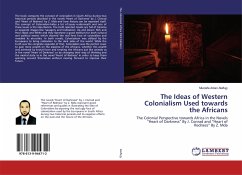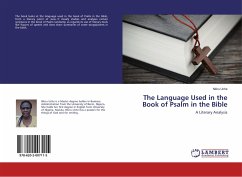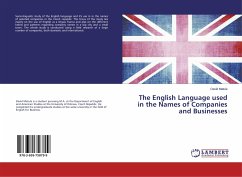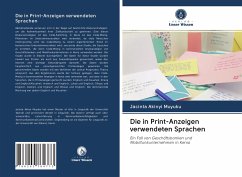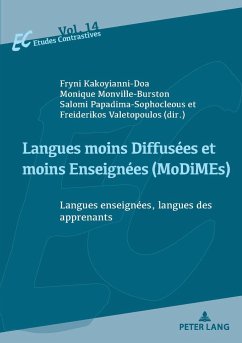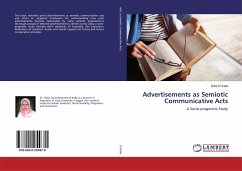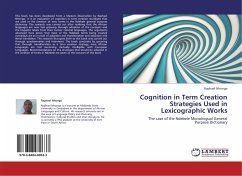
The Languages Used in Print Advertisements
A Case of Commercial Banks and Mobile Telecommunications Firms in Kenya
Versandkostenfrei!
Versandfertig in 6-10 Tagen
30,99 €
inkl. MwSt.

PAYBACK Punkte
15 °P sammeln!
Advertisers typically rely on certain discourse strategies to capture the attention of their targeted clientele. One of such discourse strategies is code-switching. In Kenya, the code-mixing phenomenon is prevalent in the corporate sector because of the fact that many people are multilingual. As code-mixing becomes an idiosyncratic trend in Kenyan corporate sector, this study sought to establish the languages used in code-mixing in print advertisements of commercial banks and mobile telecommunications firms in Kenya. The study was conducted in Eldoret. The data was collected from both primary ...
Advertisers typically rely on certain discourse strategies to capture the attention of their targeted clientele. One of such discourse strategies is code-switching. In Kenya, the code-mixing phenomenon is prevalent in the corporate sector because of the fact that many people are multilingual. As code-mixing becomes an idiosyncratic trend in Kenyan corporate sector, this study sought to establish the languages used in code-mixing in print advertisements of commercial banks and mobile telecommunications firms in Kenya. The study was conducted in Eldoret. The data was collected from both primary and secondary sources. The data was primarily obtained from language mixed print advertisements and data analysis done using the processes of Lexical Pragmatics Theory. From the results, it was concluded that code-mixing was prevalent in commercial print advertisements in Kenya. The languages that were mixed in print advertisements were: English and Kiswahili, Sheng and English/ Kiswahili, Arabic and English, Luhya and English, Gikuyu and English, Kalenjin and English and Dholuo and English. The dominant mixture however, was English and Kiswahili.



